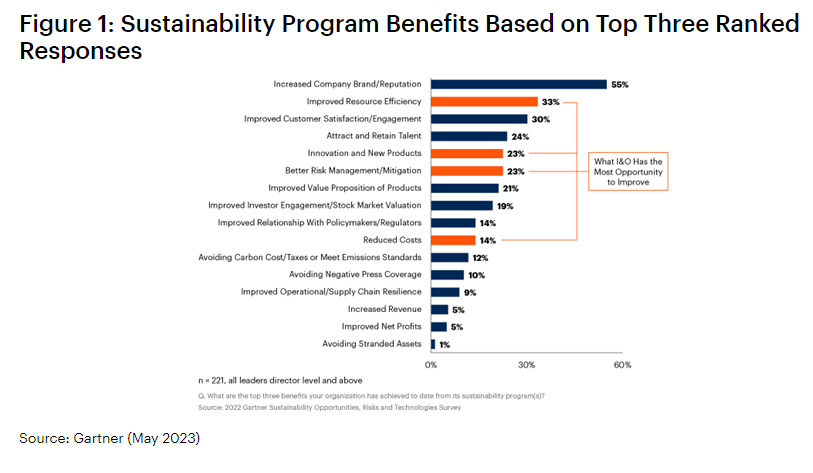Gartner: organisations consider data centre sustainability ‘high-priority’
Gartner* predicts that 75% of organisations will have implemented a data centre infrastructure sustainability programme by 2027, up from less than 5% in 2022.
In a market disrupted by price fluctuations and supply constraints, organisations can achieve greater resilience and better risk management by optimising server utilisation and storage capacity. This includes organisations using renewable energy, generating their own power, and reusing and redeploying equipment as much as possible.
Aoife Foley, IEEE Senior Member and Professor in the School of Mechanical and Aerospace Engineering at Queen’s University Belfast believes that poor storage practices or ‘dark data’ are a massive drain on resources.
“Dark data accounts for about 54% of data that's stored around the world, most of which has no function – all that data comes at a cost. When you look at the way the data is all gathered, it's unstructured. Storing a massive amount of dark data wastes energy, most of which is powered by non-renewable resources. For example, in the United States, power consumption due to data centre data storage was estimated to be at 14 billion kWh in 2020 resulting in almost 6.5 metric tons of CO2 emissions.
“As this report outlines, achieving sustainability means addressing environmental considerations during solution design as well as during the build. Solutions must meet pre-defined and agreed environmental sustainability criteria. Sustainable data centres require designs that consider energy conservation, energy efficiency, and renewable energy sources. Businesses and data centres should start by simply taking control of data storage, assessing the storage rules, and ensuring they are not holding data that is no longer needed.
“It is essential that leaders improve their data management policies, identifying which data is in fact valuable, and eliminating any dark or redundant data from their data centres to avoid emissions spiralling out of control and avoid unnecessary digital waste. Leaders should also enquire about their data centre provider’s multi-site footprint and its ability to enable distributed network availability and dynamic load placement. Identifying workloads that can be transferred from peak demand periods to off-peak hours ultimately results in lower costs for all parties.”
“Success in aligning the I&O strategy with critical business outcomes requires a more comprehensive approach that recognises the indirect benefits that come with sustainable IT operations,” said Stanish. “This is true specifically for organizations in which IT is material to the business, such as financial services.”
According to the Gartner survey, the top three indirect benefits include:
Reduced costs
The most effective action I&O leaders can take for the environment and their budget is to defer purchasing new equipment and better manage, optimise, or redeploy what they already have. According to Gartner, organisations can experience up to 60% in cost savings by simply extending product life spans from three to five years. In addition, optimising for better server utilisation and storage capacity is another way to reduce waste and save money.
Innovation
Organisations are using sustainable strategies to drive innovation and growth through new products and business models. Technology hardware vendors are rapidly releasing new products and services based on AI technology, analytics insights, and circular business models that can be leveraged for innovation. For example, open telemetry platforms may be deployed to track and improve energy efficiency, while simultaneously offering critical insights for IT staff to understand usage patterns that can be optimised for greater, more consistent performance of systems.
“The core focus of many enterprises with a sustainability strategy is actually around how they can use it to drive innovation, differentiation, and growth through new products and business models,” Stanish said. “However, fewer than half of I&O leaders we speak to are currently taking advantage of the business benefits beyond reduced energy costs.”
Better risk management
In a market disrupted by price fluctuations and supply constraints, organisations can achieve greater resilience and better risk management and mitigation by adopting sustainable recycling and resource utilisation practices. This includes organisations using renewable energy, generating their own power, and reusing and redeploying equipment as much as possible.
According to the Gartner survey, more than 85% of business leaders agree that sustainability is an investment that protects the organisation from disruption.
Gartner clients can read more in the report ‘Unlock the Business Benefits of Sustainable IT Infrastructure.’
Gartner IT infrastructure, operations, and cloud strategies conference
Gartner analysts will provide additional analysis on cloud strategies and infrastructure and operations trends at the Gartner IT Infrastructure, Operations and Cloud Strategies Conferences taking place 15—16 May in Sydney, 20—21 November in London, 6—8 December in Las Vegas and 12—13 December in Tokyo.








